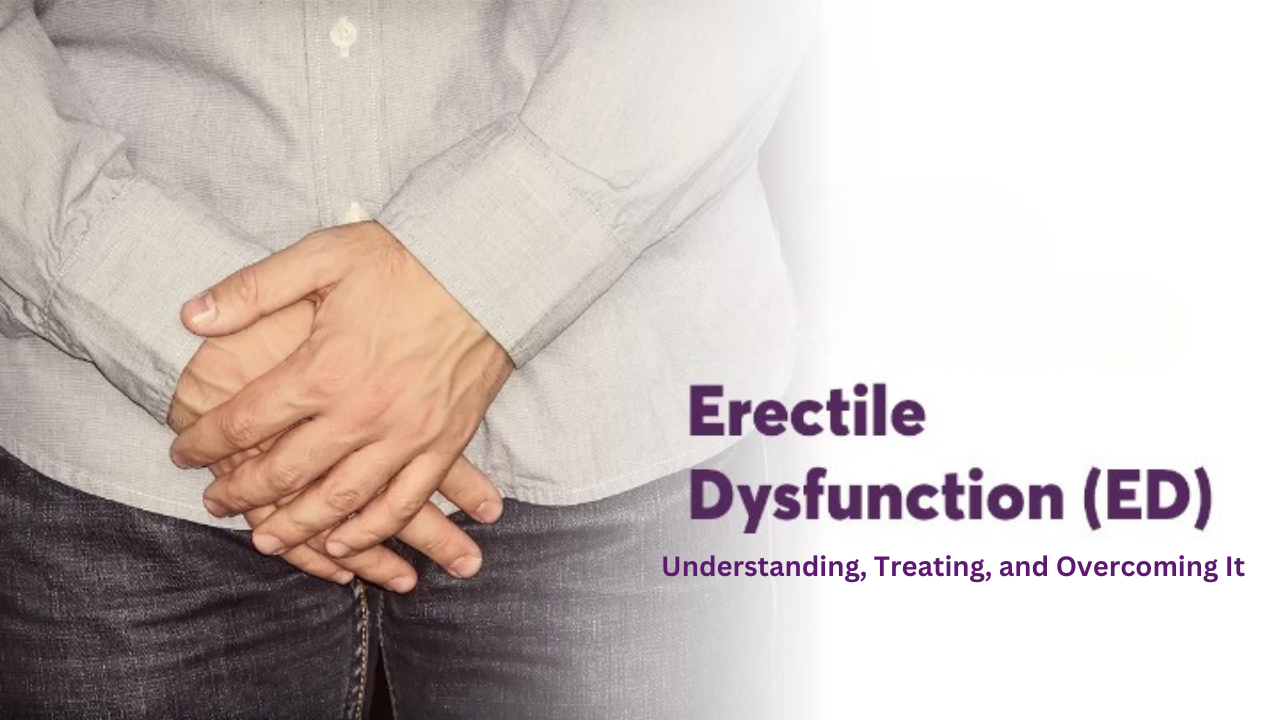Erectile dysfunction (ED) is a common issue that affects millions of men worldwide. It’s a condition that can have a significant impact on both physical health and emotional well-being, but the good news is that ED is treatable. Whether it’s a temporary issue or a chronic problem, understanding the causes, treatment options, and lifestyle changes that can help manage ED is crucial. In this blog, we’ll explore what erectile dysfunction is, how it affects men, and the various ways you can take control of your sexual health.
What is Erectile Dysfunction?
Erectile dysfunction, also known as impotence, is the inability to achieve or maintain an erection sufficient for sexual intercourse. It can occur occasionally or become a frequent issue, and it’s often linked to underlying health problems. ED can affect men of all ages, but it becomes more common as men age, particularly after the age of 40.
While occasional difficulties in achieving an erection are normal, persistent ED may indicate an underlying health issue that requires medical attention.
Common Causes of Erectile Dysfunction
Erectile dysfunction can result from a variety of physical, psychological, and lifestyle factors. Some of the most common causes include:
- Physical Conditions
Conditions like diabetes, high blood pressure, heart disease, and obesity can impair blood flow, which is essential for achieving and maintaining an erection. Hormonal imbalances, such as low testosterone, can also contribute to ED. - Psychological Factors
Stress, anxiety, depression, and relationship issues can all affect a man’s ability to perform sexually. Psychological ED often occurs when negative emotions or mental health conditions interfere with sexual arousal or performance. - Medications and Substance Use
Certain medications, particularly those used for high blood pressure, depression, and anxiety, can lead to erectile dysfunction as a side effect. Alcohol, smoking, and drug use can also negatively impact erectile function. - Age
As men age, the risk of erectile dysfunction increases due to natural changes in the body. Reduced testosterone levels, poor circulation, and a decrease in nerve sensitivity all contribute to the onset of ED.
How is Erectile Dysfunction Treated?
The good news is that erectile dysfunction is treatable, and there are multiple treatment options available. The right approach depends on the underlying cause of ED, but here are some common treatment methods:
- Lifestyle Changes
Adopting a healthy lifestyle is often the first step in managing erectile dysfunction. Regular exercise, a balanced diet, maintaining a healthy weight, and quitting smoking can improve blood flow and overall health, helping reduce ED symptoms. Reducing alcohol intake and managing stress are also key factors in improving erectile function. - Medications
Oral medications, such as Viagra (sildenafil), Cialis (tadalafil), and Levitra (vardenafil), are commonly prescribed for erectile dysfunction. These drugs work by increasing blood flow to the penis, helping men achieve and maintain an erection during sexual activity. However, they should be taken under the guidance of a healthcare provider to avoid potential side effects or interactions with other medications. - Therapy
If psychological factors like stress, anxiety, or depression are contributing to ED, therapy may be an effective treatment. Cognitive-behavioral therapy (CBT) or sex therapy can help address emotional or mental health issues that interfere with sexual performance. Couples counselling may also be beneficial for improving communication and resolving relationship problems. - Penile Injections and Implants
In some cases, when medications and lifestyle changes are not effective, penile injections or implants may be recommended. These options are typically considered when other treatments have failed. Penile injections, such as alprostadil, increase blood flow to the penis, while implants are surgically inserted devices that can help achieve an erection. - Platelet-Rich Plasma (PRP) Therapy
For men looking for a natural and non-surgical solution, PRP therapy (like the P-Shot) is gaining popularity. This involves injecting platelet-rich plasma from the patient’s own blood into the penis to stimulate tissue repair and improve blood flow. It’s a minimally invasive treatment with little downtime and can enhance sexual function.
How to Prevent Erectile Dysfunction
While some causes of ED, like ageing, are unavoidable, there are several steps you can take to reduce your risk:
- Maintain a healthy diet rich in fruits, vegetables, and whole grains.
- Exercise regularly to improve circulation and cardiovascular health.
- Quit smoking and reduce alcohol consumption.
- Manage stress and prioritise mental health.
- Get regular check-ups to monitor your health and catch any underlying conditions early.
Take Control of Your Sexual Health
Erectile dysfunction is a treatable condition, and the first step toward overcoming it is understanding its causes and seeking help. Whether through lifestyle changes, medications, therapy, or other treatments, there are numerous ways to manage ED and improve your quality of life. If you’re experiencing symptoms of erectile dysfunction, don’t hesitate to consult with a healthcare professional to explore your treatment options.
By taking proactive steps and addressing the underlying causes of ED, you can regain confidence and improve your sexual health.
